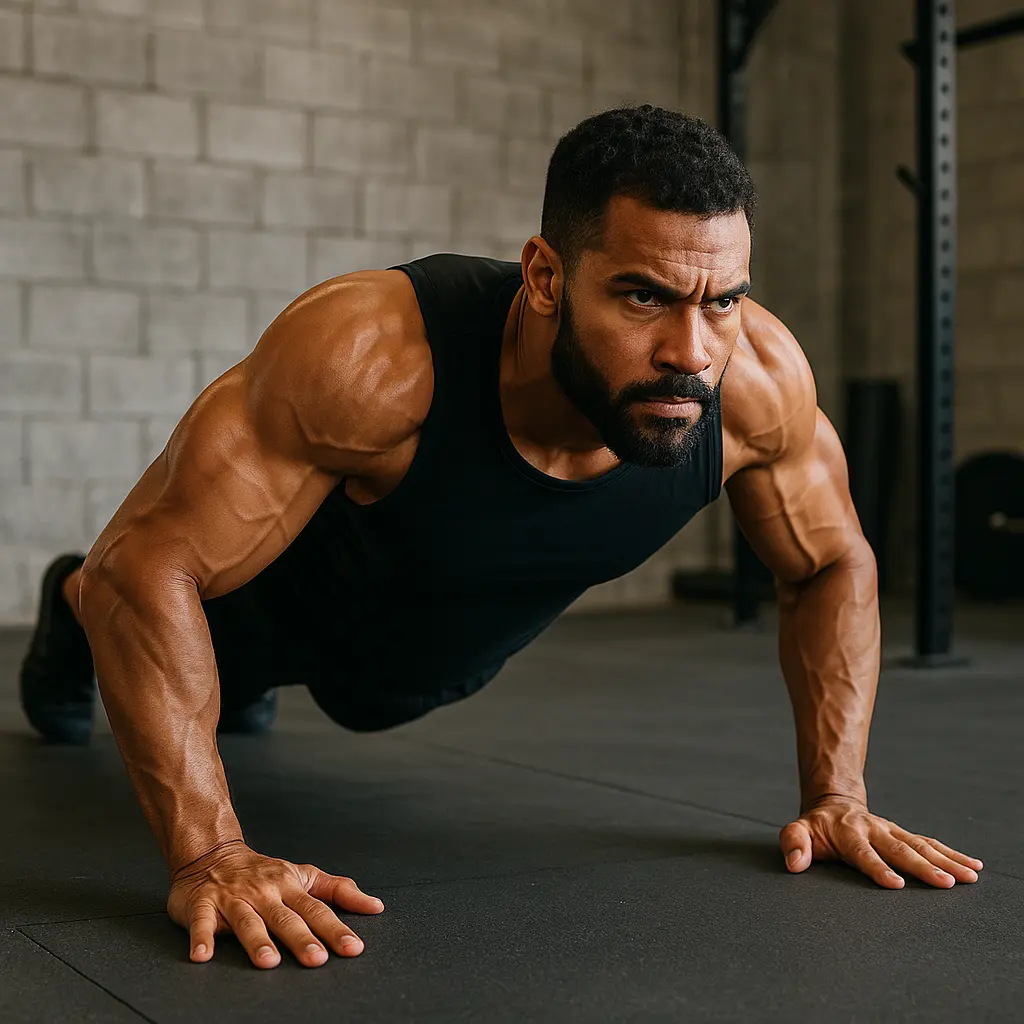Quick Answer: Yes. You can build impressive muscle using only bodyweight exercises by applying progressive overload, proper nutrition, and recovery. This guide covers science-based routines, progression steps, nutrition, recovery, and key mistakes to avoid.
1. How Does Muscle Growth Work?
Muscle hypertrophy requires mechanical tension, metabolic stress, and muscle damage. You can generate those through calisthenics by:
- Slowing down reps to increase time under tension
- Using advanced variations (e.g., archer push-ups, pistol squats)
- Increasing total volume and frequency
2. Progressive Overload Without Weights
Methods to progressively challenge muscles include:
- Increase reps or sets gradually
- Use slower tempo (3‑0‑3 count)
- Focus on unilateral or elevated versions
- Limit rest periods
- Change leverage (rings, TRX)
3. Structured Bodyweight Muscle Routine
3‑Day Split Plan
- Day 1 – Push: Push-ups, dips, pike push-ups
- Day 2 – Pull: Pull-ups, inverted rows, chin-ups
- Day 3 – Legs & Core: Squats, pistol progressions, hanging leg raises
Training Guidelines
- Perform 3–5 sets per exercise
- Aim for 8–20 reps based on intensity
- Rest 60–90 seconds between sets
- Train muscle groups twice per week if possible
Sample Week
- Mon: Push + core
- Tue: Pull + cardio
- Wed: Legs + core
- Thu: Rest or active recovery
- Fri: Push + pull hybrid
- Sat: Cardio + mobility
- Sun: Full rest
4. Nutrition to Support Muscle Growth
Focus on:
- Calories: 10–15% above maintenance if you want lean muscle gains
- Protein: 1.6–2.2 g/kg (0.7–1 g/lb)
- Carbs & fats: stable energy levels for performance
Example: 75 kg athlete → 3000 kcal with 150 g protein, rest carbs/fats.
5. Recovery and Supporting Habits
- Get 7–9 hrs quality sleep
- Use foam rolling or mobility drills post-workout
- Stay hydrated (2–3 L/day)
- Eat whole foods: lean proteins, vegetables, whole grains
6. Common Mistakes to Avoid
- No progression – keeps workouts easy
- Too low protein intake
- Train same muscle too often without recovery
- Neglecting lower body or core
- Lack of variety – causes plateaus
7. Advanced Bodyweight Progressions
- One-arm push-ups, archer pull-ups
- Pistol squats, shrimp squats
- Handstand push-ups and deep ring dips
- Advanced core: windshield wipers, dragon flags
Transition only once mastering solid form and volume.
8. Tools You Can Use
- Gymnastic Rings – Adds instability and strength challenge
- Pull-up Bar – Essential for pull progressions
- Resistance Bands – For assistance or added resistance
9. FAQs
Can bodyweight training build real muscle?
Yes. Many advanced calisthenics athletes have impressive muscle mass from consistent, progressive bodyweight training.
Do I need supplements?
No. Supplements can help but aren’t required. Focus first on protein-rich foods and balanced nutrition.
How do I overcome plateaus?
Use more challenging variations, increase tempo, reduce rest, or add volume—progressive overload is key.
